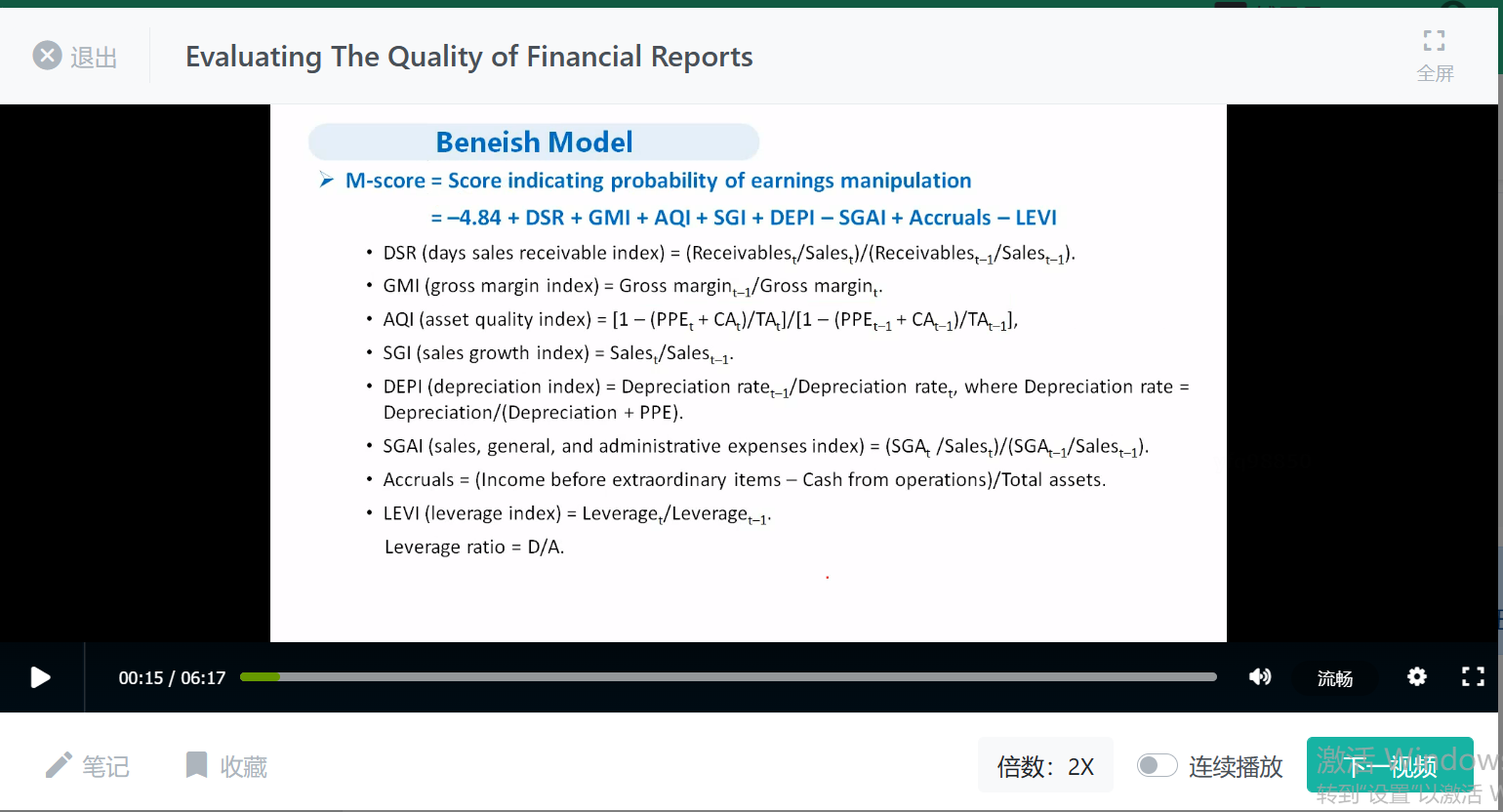NO.PZ202208300100001104
问题如下:
Which of the following from Andrei’s Beneish M-score determination is the best indicator that Galaxy could be manipulating earnings?
选项:
A.The total M-score
B.The days sales in receivable index
C.The leverage index
解释:
SolutionB is correct. A DSRI (days sales in receivable index) greater than 1 indicates an inappropriate relationship between accounts receivable and revenue recognition and is a potential signal of earnings manipulation. For Galaxy, it is the largest positive contributor (DSRI = 1.619) that would increase the M score. Larger values for the M-score (and contributors) are more indicative of earnings manipulation. Increasing leverage could predispose a company to manipulate earnings, but here the leverage index is negative indicating that leverage has decreased.
A is incorrect. Higher M-scores (less negative) indicate an increased probability of earnings manipulation. Here the lower (more negative score) would indicate that the company is less likely to be manipulating earnings.
C is incorrect. Increasing leverage could predispose a company to manipulate earnings, but here the leverage index is negative, indicating that leverage has decreased.
???????????????





